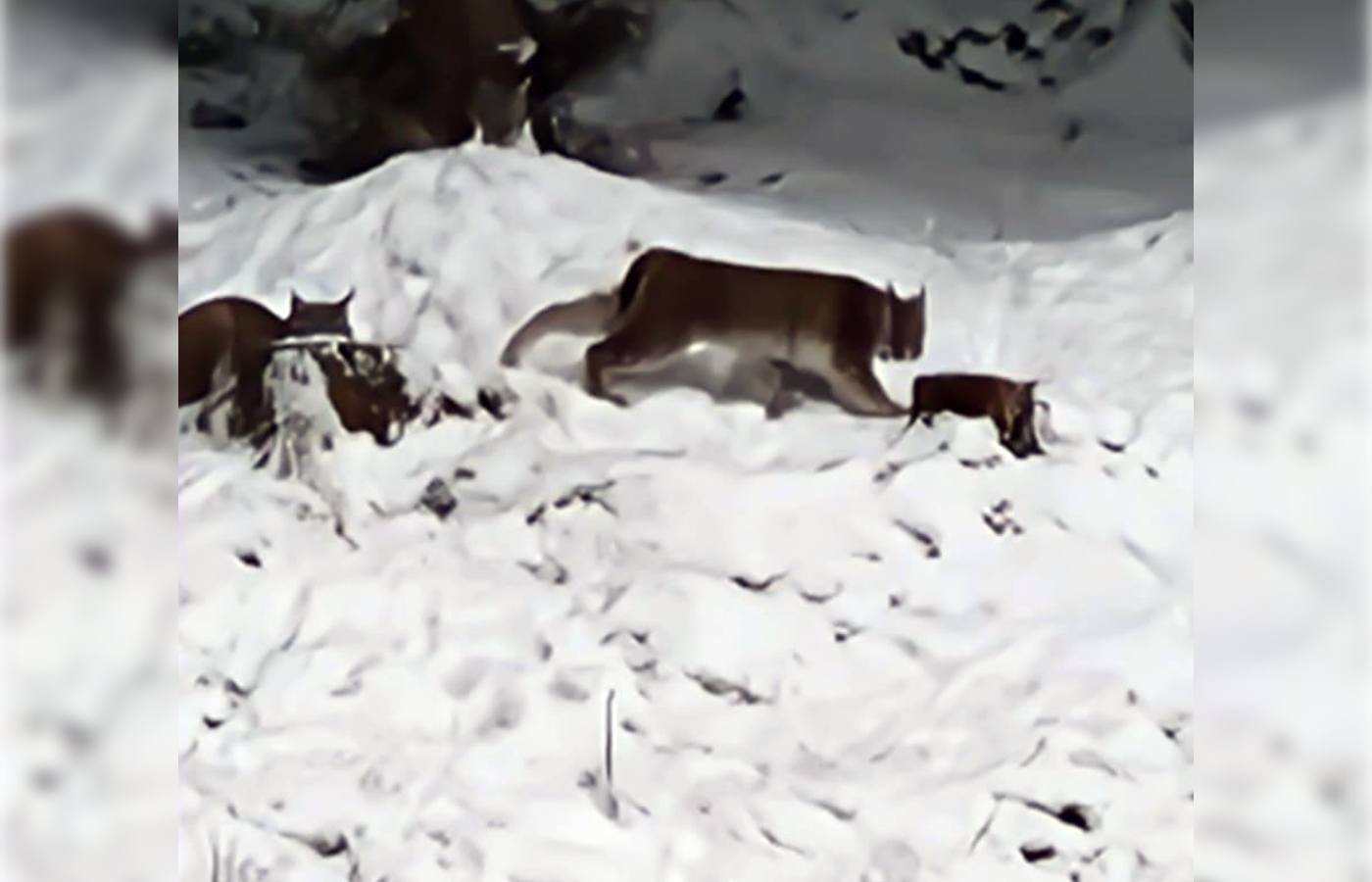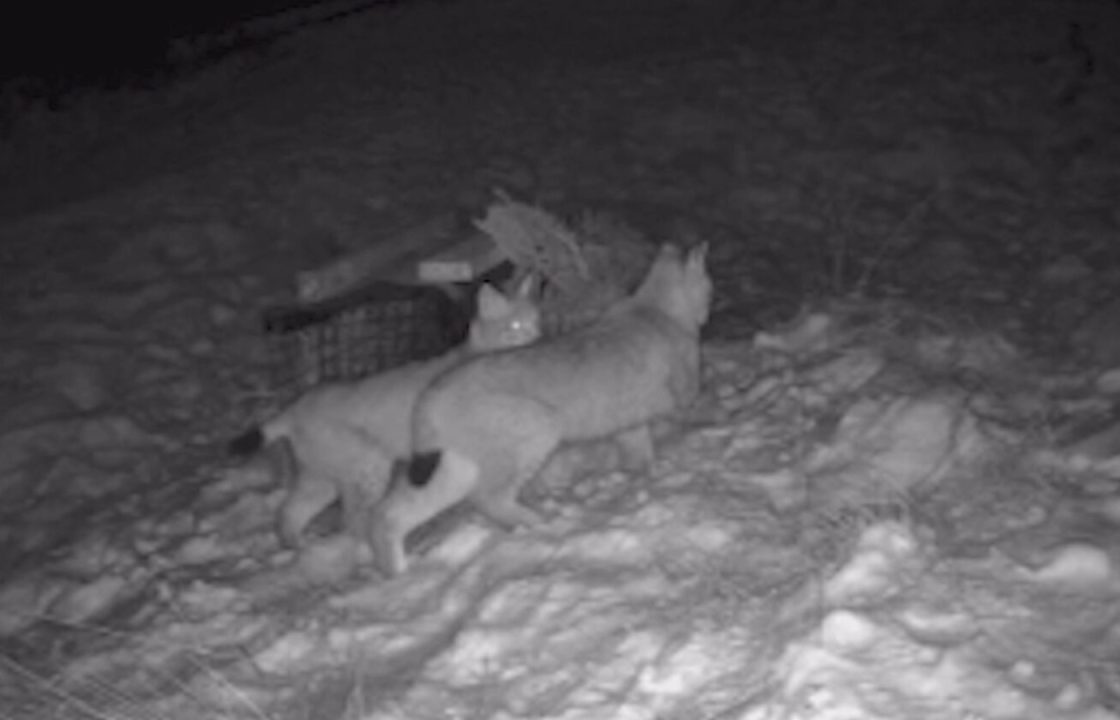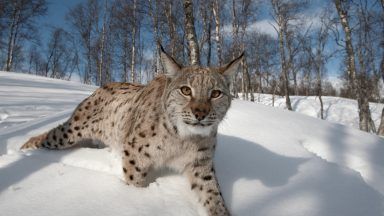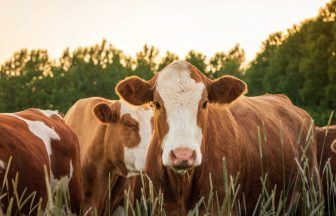Two more lynx have been captured after being ‘deliberately abandoned’ in the Highlands.
Police received a report of two big cats seen in the Dell of Killiehuntly area near Kingussie around 7.10am on Friday.
It comes after two other lynx were spotted in the Drumguish area near Kingussie on Wednesday before they were captured on Thursday night.
 Royal Zoological Society of Scotland
Royal Zoological Society of ScotlandHighland Wildlife Park confirmed that the second pair of lynx had been safely captured on Friday evening.
In a post shared on Facebook, the park said the animals appeared to have been “deliberately abandoned” in the Cairngorms.
Early reports said the big cats appear to be in good health.
The park added that they don’t think there are more lynx loose but are monitoring the release site.
“It’s been a rollercoaster 48 hours, with people working throughout the day and night, in some extremely challenging conditions, but the efforts of our staff and partners, and members of the local community, have ensured that the outcome is a positive one,” the park said.
Police Scotland said enquiries to establish how the animals came to be in the area are ongoing.
RZSS chief executive David Field said: “We condemn the illegal release of these lynx in the strongest possible terms.
“It was a highly irresponsible act, and it is very unlikely they would have survived in the wild due to a lack of adequate preparation.”
What is a lynx and do they attack humans?
A lynx is a type of wildcat that lives and hunts in forests all over North America, Europe, and Asia.
There are no wild lynx living in Scotland, although there has been debate about whether they should be reintroduced.
Lynx are bigger than house cats, but they’re not massive like lions or tigers and are more similar in size to labrador dogs.
There are four different species of lynx: Eurasian and Iberian lynxes live in Europe and Asia, and bobcats and Canadian lynx live in North America.
The Iberian lynx is generally the largest species, followed closely by the Canada lynx
Two of their most distinctive features are the dark, pointed tufts of hair on their ears and their short, stubby tails, which are generally 10-20 centimetres.
According to the International Fund for Animal Welfare, lynx typically ignore humans but could attack in self-defence if they feel threatened.
Follow STV News on WhatsApp
Scan the QR code on your mobile device for all the latest news from around the country


 STV News
STV News

























